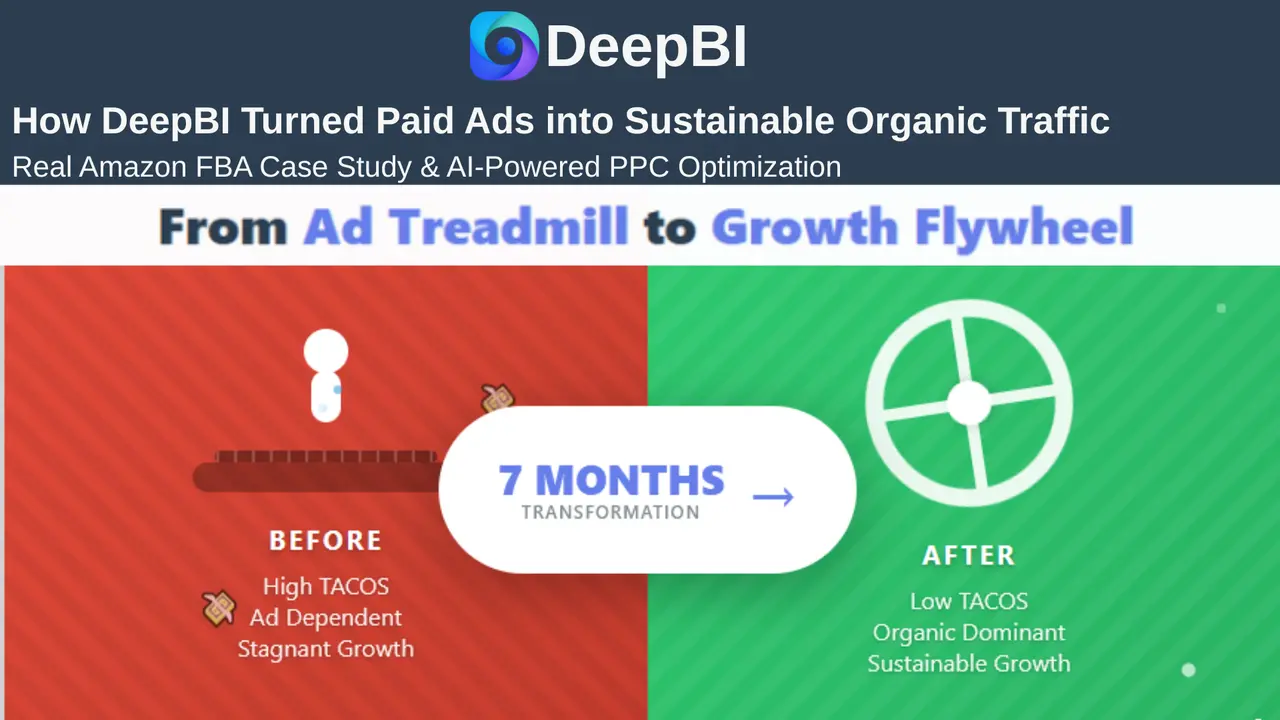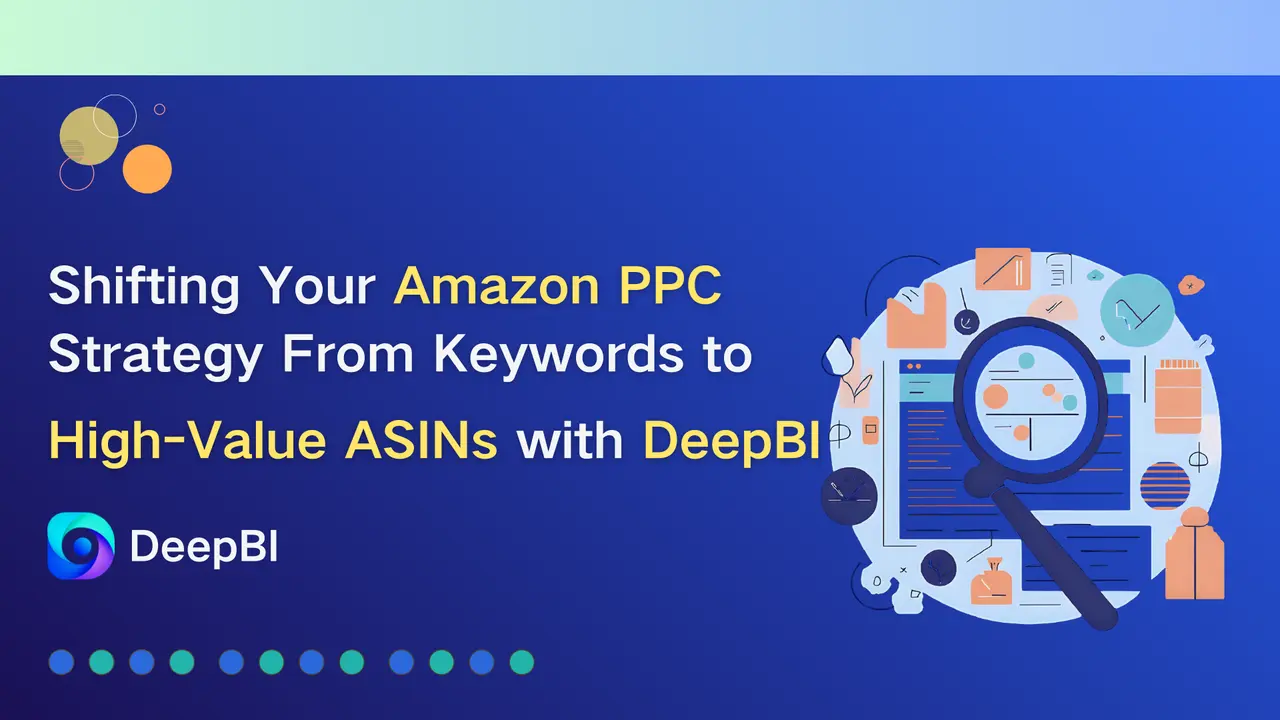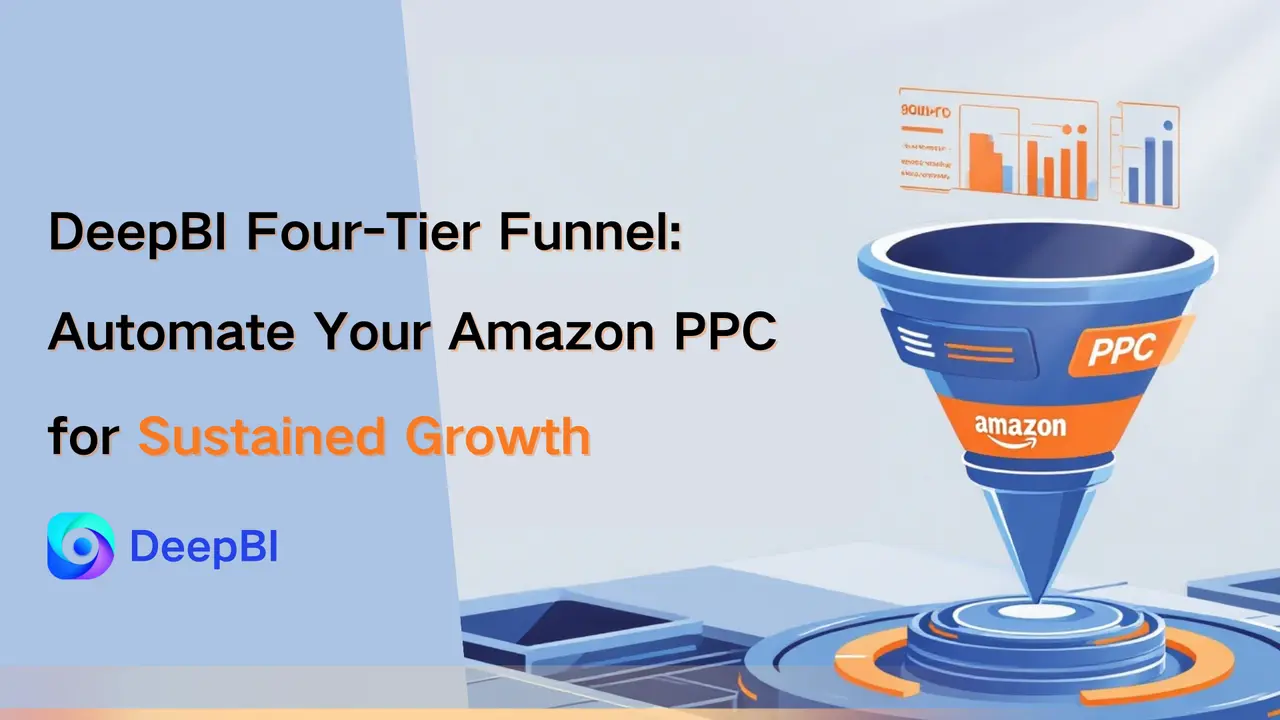Executive Summary
Most Amazon sellers treat paid advertising and organic rankings as separate challenges. But a home and lifestyle brand discovered that the two are closely connected—and that the right AI can turn paid campaigns into long-term organic growth.
By implementing DeepBI’s Organic Growth Engine, this seller achieved remarkable results: their paid ads didn’t just generate immediate sales—they systematically improved their organic rankings, creating a compounding effect where every ad dollar works twice as hard.
- 43% reduction in TACOS (Total Advertising Cost of Sales)
- 3:1 organic-to-paid ratio — every paid order generates 3 organic orders
- 141% growth in total sales with decreasing ad dependency
- Escaped the paid advertising treadmill — sustainable growth without proportional ad spend increases
The Real Problem: The Paid Advertising Trap
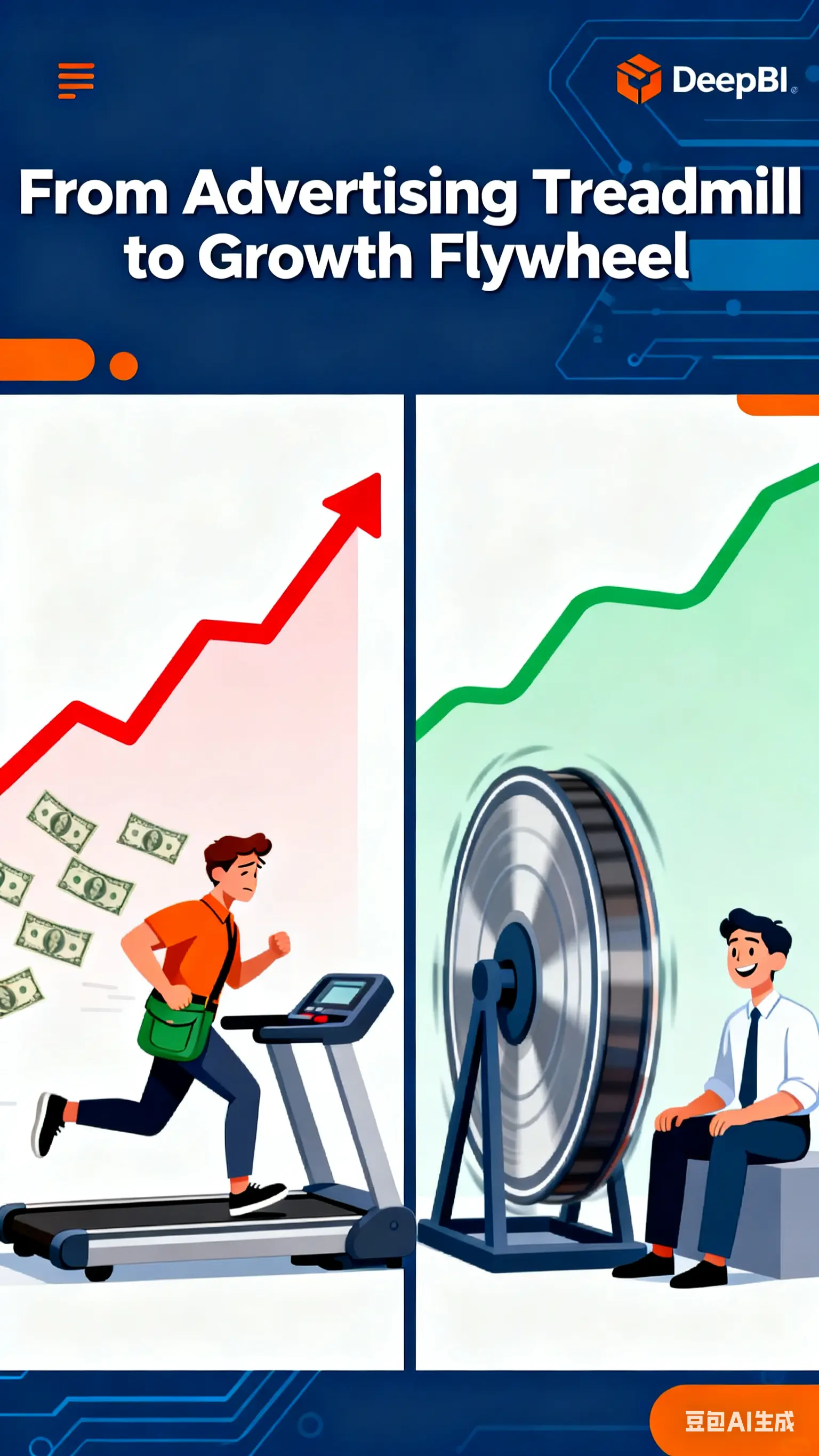
The Hidden Crisis Most Sellers Don't See
When this home and lifestyle seller first came to us, they thought their problem was simple: high ACOS. But the real crisis ran deeper.
They were stuck on what we call the paid advertising treadmill.
Here's how it works: You run ads to get sales. The ads work, so you scale ad spend. Sales grow, but so does your advertising dependency. Your organic ranking stays flat because Amazon's algorithm doesn't see your product as naturally competitive — it only sees paid traffic.
Eventually, you hit the ceiling. You can't scale ads profitably anymore, but you can't stop them either because organic traffic is never developed. You're trapped.
The Numbers Told the Story
- TACOS: 27.6% — More than a quarter of total revenue went to advertising
- Organic sales ratio: 1:1 — For every paid sale, only one organic sale followed
- Organic ranking: Stagnant — Despite thousands in ad spend, organic position for key terms hadn't improved in months
- Growth ceiling: Visible — They could see the end of profitable scaling approaching
The seller was running faster just to stay in place. They needed paid ads to generate most of their sales, but the ads weren't building toward anything sustainable.
"We were spending more every month on ads, but our organic ranking never improved. It felt like renting our business from Amazon instead of building equity in it."
The Insight: Paid Ads Should Build Organic Rankings
Understanding Amazon's Organic Algorithm

Most sellers don't realize that Amazon's organic ranking algorithm watches your paid campaigns closely.
Amazon doesn't care whether a sale came from organic or paid traffic. What Amazon cares about is: Is this product making customers happy?
When Amazon's algorithm sees a product with:
- High conversion rates
- Strong click-through rates
- Low return rates
- Positive reviews and ratings
- Consistent sales velocity
It interprets this as: "This product is valuable. Customers want it. Show it to more people organically."
The problem? Most PPC tools optimize only for immediate ROAS. They chase cheap clicks and quick conversions, but they don't think about what signals those campaigns send to Amazon's organic algorithm.
The Opportunity
What if your paid campaigns could be strategically designed to do two things simultaneously:
- Generate profitable sales today (traditional PPC goal)
- Send powerful signals to Amazon's algorithm that boosts your organic ranking
This is exactly what DeepBI's Organic Growth Engine was built to do.
The Solution: DeepBI's Organic Growth Engine
How It Works: The Organic Leverage Layer
DeepBI's AI doesn't just optimize for immediate conversions. It identifies high-performing keywords and systematically uses paid advertising to build organic authority.
The Three-Phase Process:
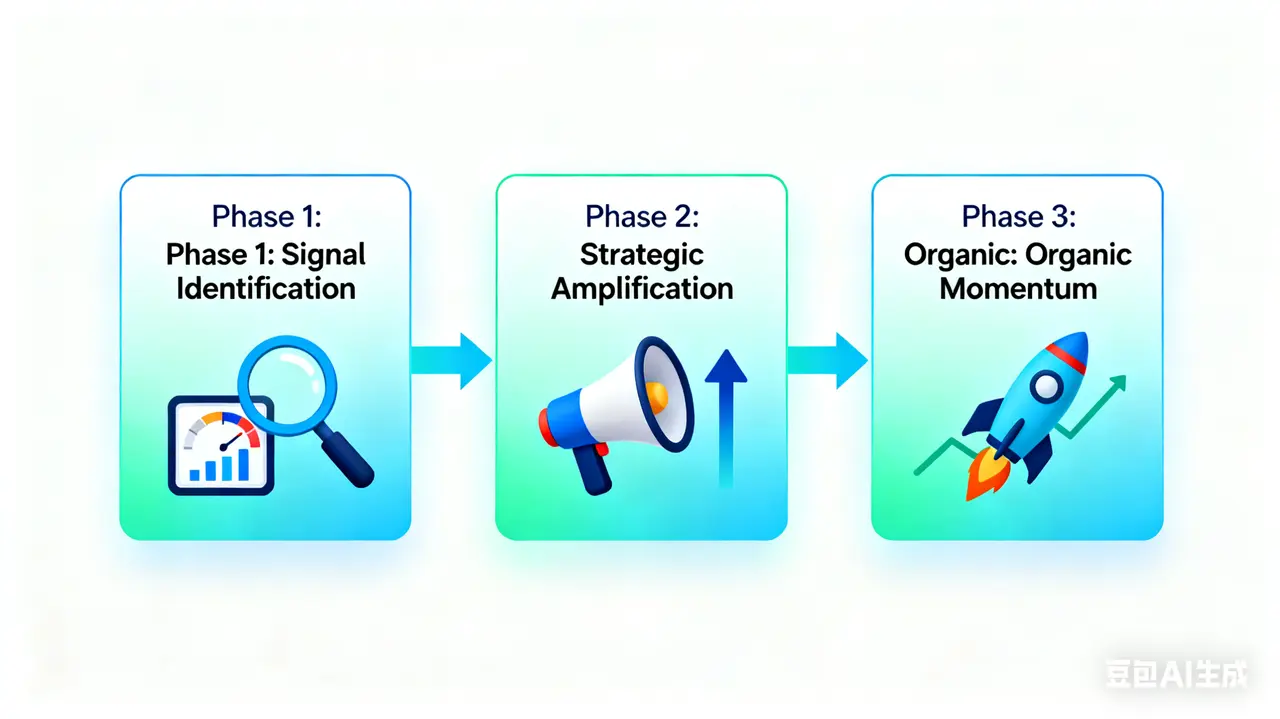
Phase 1: Signal Identification
DeepBI continuously analyzes campaign performance across its four-layer funnel to identify keywords and competitor ASINs that show strong potential, focusing on terms that progress through and excel in each layer's core objectives:
- From the Exploration Layer: Keywords with initial relevance (e.g., captured via competitor ASIN ads or broad targeting) that show early engagement (high CTR, low bounce) — signaling alignment with user intent, even before full conversion data.
- From the Initial Screening Layer: Terms that have generated early conversions and meet baseline efficiency (e.g., acceptable ACOS), moving past broad exploration to validate preliminary user satisfaction.
- From the Precision Layer: Keywords with stable, consistent performance (sustained high conversion rates, low return rates) over time, proving they are not "one-hit wonders" but reliably drive satisfied customers.
- From the Volume Expansion Layer: High-performing terms that also demonstrate pricing efficiency (profitable at competitive bids), as the layer's focus on scaling winners ensures these keywords can deliver growth without sacrificing profitability.
Phase 2: Strategic Amplification
Once high-potential keywords and ASINs are identified, DeepBI doesn't just bid efficiently — it strategically targets top-of-search placements to maximize visibility and signal strength.
Here's the crucial insight: When you consistently win top ad positions for high-converting keywords, Amazon's algorithm notices a pattern:
"This product appears at the top of search → Gets high clicks → Converts at a strong rate → Customers don't return it → Reviews are positive"
Amazon interprets this as: "This product deserves organic visibility for these terms."
Phase 3: Organic Momentum
As organic rankings improve, something powerful happens: You start getting free traffic for the same keywords you're paying for.
- You bid on "wireless earbuds for gym" and get 100 sales (all paid)
- Your organic ranking climbs from page 3 to page 2. Now you get 80 paid + 40 organic = 120 total sales
- You reach page 1 organically. Now you get 60 paid + 180 organic = 240 total sales
Your ad spend stays the same, but total sales triple. This is the compounding effect of the Organic Growth Engine.

Real Example from This Seller
DeepBI identified that the keyword "minimalist wall shelf" was a high-opportunity term:
- Conversion rate: 16.5% (strong)
- Click-through rate: 2.1% (above category average)
- Return rate: 5.2% (excellent)
- Customer rating: 4.6 stars
DeepBI strategically targeted top-of-search position for this keyword, even though it meant temporarily higher CPC. Within 45 days:
- Organic ranking improved: Page 4 → Page 1, Position 9
- Organic traffic increased: 285% for this keyword
- Sales ratio shifted: From 100% paid to 32% paid, 68% organic
The Results: Breaking Free from the Advertising Treadmill
Overall Performance Transformation

The Compounding Effect
What makes these numbers remarkable is the trajectory, not just the snapshot.
Month 1:
- Ad spend: $3,200
- Paid sales: $5,800
- Organic sales: $5,800
- Total sales: $11,600
- TACOS: 27%
Month 4 (Midpoint):
- Ad spend: $3,200 (unchanged)
- Paid sales: $7,200 (+24% from Month 1)
- Organic sales: $12,000 (+107% from Month 1)
- Total sales: $19,200
- TACOS: 16.7%
Month 7:
- Ad spend: $3,200 (unchanged)
- Paid sales: $7,000 (+21% from Month 1)
- Organic sales: $21,000 (increased 118% from Month 1)
- Total sales: $28,000 (+141% from Month 1)
- TACOS: 11.4%
Keyword-Level Transformation
DeepBI improved organic rankings across the board:
- 23 keywords moved to page 1 (from page 2-4)
- 57 keywords improved by at least 10 positions
- Average organic ranking: Improved from position 32 to position 16
More importantly, these weren't just vanity metrics. The improved rankings generated real traffic:
- Organic sessions increased 262% without additional ad spend
- Organic conversion rate improved 12% as higher rankings brought more qualified traffic
- Customer acquisition cost dropped 59% as the organic-to-paid ratio improved
What This Means Financially
Let's put this in dollar terms.
Before DeepBI (1st Month): To generate $11,600 in monthly sales, the seller needed to allocate $3,200 to ad spend—this resulted in a TACOS of approximately 27.6%
After DeepBI (7th month): To generate $28,000 in monthly sales (a significant increase from the first month), the seller still only needed $3,200 in ad spend—lowering their TACOS to 11.4%
That's $16,400 more in monthly revenue with zero increase in advertising budget.
Over 12 months, that's $196,800 in additional revenue without proportional marketing costs —The revenue that flows directly to profit since the customer acquisition cost didn't increase.
"For the first time, we're not worried about what happens if we pause our ads. We've built real organic momentum. That's equity in our business, not just rented traffic."
Why Traditional PPC Fails at This

The Fundamental Flaw
Most PPC optimization tools — even sophisticated ones — optimize for a single goal: maximize immediate ROAS or minimize immediate ACOS.
This creates a blind spot. These tools will:
- Bid down on expensive keywords (even if they build organic authority)
- Chase long-tail, low-competition terms (even if they don't improve organic ranking)
- Avoid top-of-search positions (even though they send stronger signals to Amazon's algorithm)
- Optimize for today's sale (at the expense of tomorrow's organic traffic)
They're playing checkers when they should be playing chess.
Why DeepBI Succeeds
DeepBI's AI operates with a dual-objective optimization model:
- Short-term efficiency: Generate profitable sales today
- Long-term leverage: Build organic ranking momentum for tomorrow
The AI makes thousands of micro-decisions that balance these objectives:
- When to bid aggressively for top position (building organic signals)
- When to bid efficiently for conversions (maintaining profitability)
- Which keywords deserve investment beyond immediate ROAS (organic potential)
- How to sequence campaigns to create compounding effects
Human managers can't make these calculations at scale. Traditional software doesn't even try.
The Broader Implications
Escaping the Zero-Sum Game
Most Amazon sellers view PPC as a zero-sum game: You compete against other sellers for the same ad positions, driving CPCs higher over time until someone's margin breaks.
The Organic Growth Engine changes this dynamic. When you use paid ads to build organic rankings, you're no longer just competing for paid positions — you're building a moat that makes your business more defensible over time.
Building Business Value
From an investor or acquisition perspective, a business that generates most sales through paid ads is worth significantly less than one with strong organic positioning.
Why? Because organic traffic represents:
- Lower customer acquisition costs
- More sustainable competitive advantage
- Less vulnerability to CPC inflation
- Better unit economics at scale
By treating paid ads as an investment in organic growth rather than just a sales channel, DeepBI helps sellers build more valuable businesses.
The Compounding Advantage
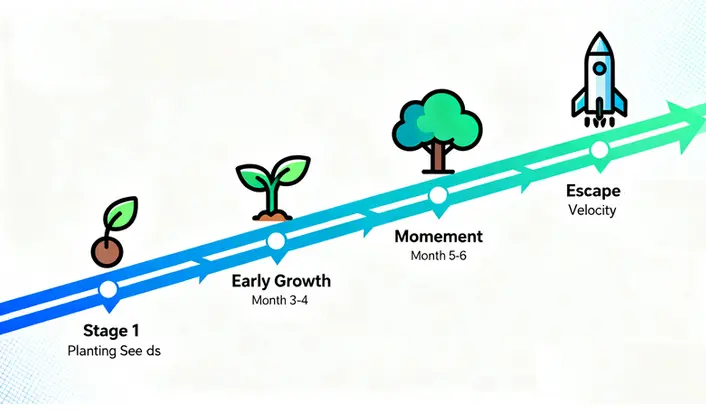
The most powerful aspect of the Organic Growth Engine is that it compounds over time.
- Month 1-2: You're paying for position and signaling to Amazon's algorithm
- Month 3-4: Organic rankings improve, you get more traffic per ad dollar
- Month 5-6: Strong organic positions reinforce themselves, your ads become more efficient
- Month 7+: You've achieved escape velocity — organic growth becomes self-sustaining
This seller is now in Month 7. Their TACOS continues to decline month-over-month, not because they're cutting ad spend, but because organic sales keep growing faster than their (stable) ad investment.
Key Takeaways
- Paid and organic aren't separate channels — they're connected. Your PPC campaigns send signals to Amazon's algorithm. The question is: are those signals helping or hurting your organic ranking?
- ACOS is a lagging indicator. TACOS tells the real story. You can have great ACOS but terrible TACOS if you're not building organic momentum. Sustainable growth requires decreasing ad dependency over time.
- Top-of-search positions aren't just about immediate visibility. They're strategic investments in organic authority. Sometimes paying more per click today builds free traffic tomorrow.
- AI is necessary for dual-objective optimization. Balancing short-term efficiency with long-term organic building requires processing millions of data points. Humans can't do this at scale.
- The goal isn't to eliminate paid advertising — it's to make it build equity. The best PPC strategy uses today's ad spend to create tomorrow's organic traffic, creating a compounding effect that builds business value over time.
Is This Approach Right for You?
The Organic Growth Engine works best for sellers who:
- Have products with genuine market fit (good reviews, reasonable return rates)
- Are currently dependent on paid advertising for most sales
- Have hit a scaling ceiling with traditional PPC optimization
- Want to build long-term business value, not just short-term sales
- Understand that building organic ranking takes 2-3 months to show full results
It's not a get-rich-quick scheme. It's a systematic approach to transforming paid advertising from an operating expense into an investment that builds sustainable competitive advantage.
Conclusion: From Treadmill to Flywheel
This home and lifestyle seller started where many Amazon FBA businesses find themselves: running faster on the paid advertising treadmill just to maintain position.
By implementing DeepBI's Organic Growth Engine, they transformed their PPC strategy from a necessary evil into a strategic asset. Every ad dollar now works twice — generating immediate sales while building the organic momentum that creates sustainable, scalable growth.
The numbers tell the story:
- 43% lower TACOS
- 3× more organic sales per paid sale
- 141% revenue growth with flat ad spend
- 262% increase in organic sales with paid sales also growing 21%
- A business with real equity, not just rented traffic
But perhaps the most important metric is this: The seller now spends zero hours per week on PPC management, and they're confident that their business is building toward something sustainable — not just cycling ad dollars.
They escaped the treadmill and created a flywheel.


